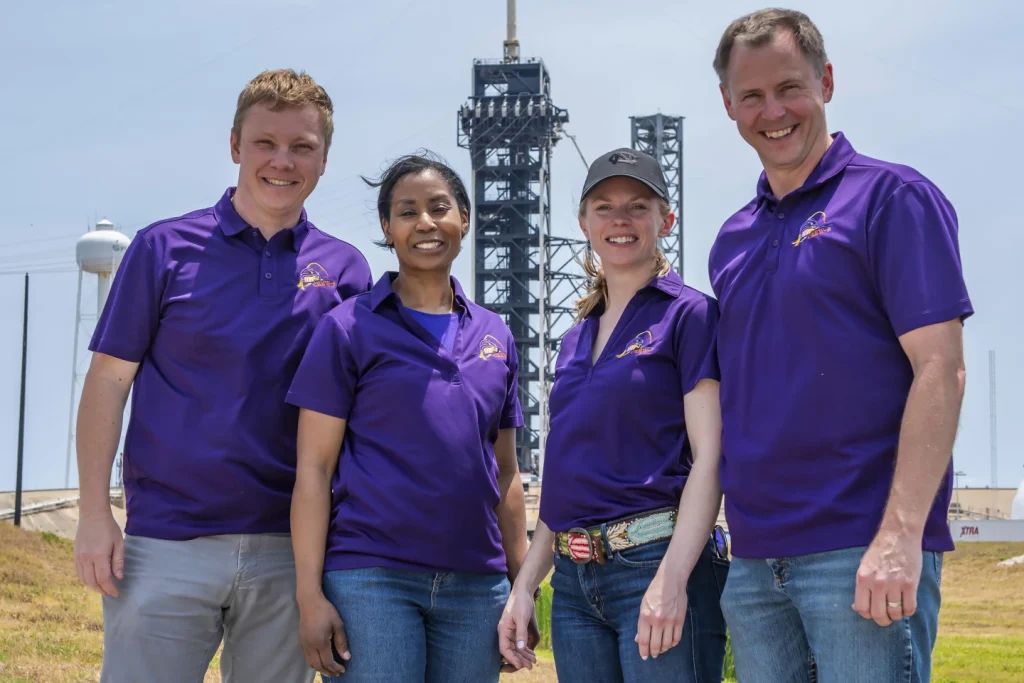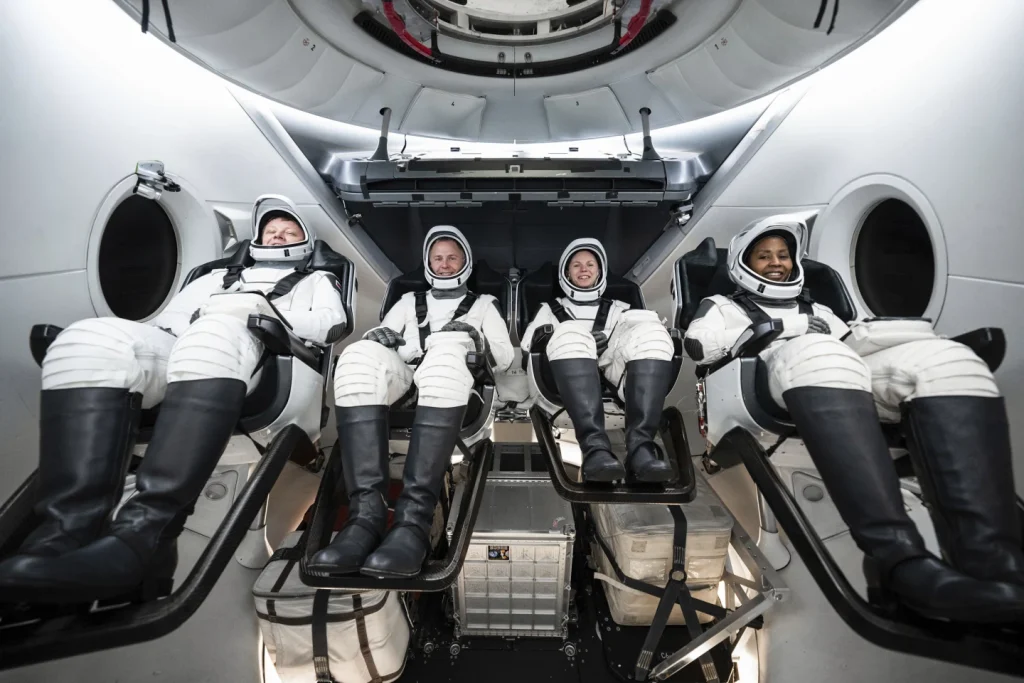On Friday, NASA announced a significant decision in human spaceflight operations that underscores both the complexity of space missions and the evolution of collaboration between governmental and private entities in the aerospace sector.
To accommodate the safe return of two astronauts currently stranded aboard the International Space Station (ISS), the agency decided to remove two crew members—NASA astronauts Zena Cardman and Stephanie Wilson—from an upcoming mission slated for September.
This decision highlights the challenges and risks inherent in human spaceflight, particularly in light of technical difficulties faced by the Boeing Starliner capsule.
NASA’s decision-making process in this context illustrates the multifaceted considerations that underpin crew assignments.
On one level, the agency’s priority lies with the safe return of its astronauts, which in this case involves launching Nick Hague and Russian cosmonaut Aleksandr Gorbunov aboard a SpaceX rocket.
Their mission is of paramount importance; they will be responsible not only for conducting research and activities aboard the ISS but also for ensuring that their return flight incorporates the safe passage of astronauts Suni Williams and Butch Wilmore.
Both Williams and Wilmore are currently on the ISS but were initially scheduled to return aboard the Boeing Starliner, a vehicle that has been troubled by operational glitches, specifically concerning thruster issues and helium leaks.
The Boeing spacecraft’s compromised status prompted NASA to reassess the crew configuration, ultimately leading to the removal of Cardman and Wilson from the upcoming mission to safeguard the astronauts whose return is now reliant on Spacex’s more reliable Falcon 9 rocket.
The factors influencing NASA’s decision go beyond mere logistical considerations. The agency stated that it took into account the spaceflight experience of the astronauts involved.
Experience in space missions can be a significant variable, as seasoned astronauts are generally more adept at navigating the unforeseen challenges that may arise in the stressful environment of space.
Williams and Wilmore, for instance, are both experienced spacefarers who have previously completed multiple missions, thus positioning them as essential crew members for the return trip from the ISS.
It is noteworthy that while Cardman and Wilson have impressive academic and professional credentials, their operational experience in space is comparatively less extensive, prompting NASA to prioritize the returning crew’s familiarity and technical prowess.
The backdrop of NASA’s decision is further compounded by the history of U.S. human spaceflight post-shuttle retirement.
After the conclusion of the Space Shuttle Program in 2011, the United States relied heavily on Russia’s Soyuz spacecraft to transport astronauts to and from the ISS.
This strategic dependency existed until SpaceX’s entry into crewed missions in 2020, marking a new chapter in space exploration that transitioned to a collaborative model involving private enterprises.
This partnership has been fundamental in reopening U.S. access to human spaceflight capabilities and expanding operational flexibility. As evidenced by the ongoing trade of crew seats between NASA and Russia, the international collaboration in space continues to remain a keystone of human spaceflight operations.
The decision also underscores broader trends regarding the shift towards a system that incorporates multiple vehicle options, enhancing redundancy and resilience in human spaceflight.
Private companies have become instrumental in this new landscape, as evidenced by NASA’s investment in commercial crew programs intended to foster competition and innovation.
SpaceX, one of the beneficiaries of this investment, has emerged as a leader in the field, showcasing an impressive track record of successful crewed launches.
Simultaneously, Boeing’s challenges with the Starliner capsule serve as a reminder of the complexities and unpredictabilities associated with developing new aerospace technologies.
Despite these hurdles, NASA remains committed to its partnerships with commercial companies, affirming its intention to foster a competitive environment that ultimately benefits the safety and efficacy of space missions.
The recent announcement by NASA regarding the modification of crew assignments for the upcoming SpaceX flight is a telling reflection of the intricate dynamics governing human spaceflight today.
This decision, which involves the removal of NASA astronauts Zena Cardman and Stephanie Wilson from the mission, has been necessitated by the urgent need to ensure the safe return of two astronauts currently aboard the International Space Station (ISS).
This situation not only highlights the inherent challenges and risks associated with human spaceflight but also illustrates the evolving collaboration between governmental agencies and private aerospace entities, particularly in the context of SpaceX’s role in these missions.
NASA’s choice to prioritize the return of astronauts Suni Williams and Butch Wilmore underscores the agency’s commitment to crew safety above all else.
Their planned return aboard a SpaceX Falcon 9 rocket, rather than the Boeing Starliner—which has faced multiple technical challenges—demonstrates a prudent shift in strategy.
The operational difficulties encountered with the Starliner, including issues with thrusters and helium leaks, have necessitated a reevaluation of crew configurations to ensure that experienced astronauts are in place for the critical return phase of the mission.
The decision to retain Williams and Wilmore, both of whom have extensive experience in spaceflight, reflects a strategic approach to risk management that is essential in the unpredictable environment of space.

Moreover, this situation illustrates the importance of experience in crew assignments. NASA’s assessment of the astronauts’ backgrounds reveals a nuanced understanding of the demands placed on individuals in high-stakes situations.
While Cardman and Wilson possess commendable credentials, their relative lack of operational experience in space missions compared to Williams and Wilmore has influenced NASA’s decision.
This prioritization of seasoned astronauts for critical missions is vital, as their familiarity with the rigors of space travel equips them to handle unexpected challenges more effectively.
The backdrop of this decision is also significant in the context of the broader history of U.S. human spaceflight. Following the retirement of the Space Shuttle program in 2011, the United States relied heavily on Russian Soyuz spacecraft for transportation to the ISS.
This dependency persisted until the advent of SpaceX’s crewed missions in 2020, marking a pivotal transition towards a collaborative model that integrates private sector capabilities into national space exploration efforts.
The ongoing partnership between NASA and SpaceX not only reestablishes U.S. access to human spaceflight but also enhances operational flexibility and resilience in crewed missions.
Furthermore, NASA’s decision to adjust crew assignments in response to the technical challenges faced by the Boeing Starliner reflects a broader trend towards a diversified approach to human spaceflight.
The incorporation of multiple vehicle options enhances redundancy, thereby bolstering the resilience of space missions.
The strategic investments made by NASA in commercial crew programs have fostered an environment of competition and innovation, with SpaceX emerging as a frontrunner in this new landscape.
The ability to adapt and respond to challenges, as demonstrated by NASA’s recent decision, is crucial in ensuring the continued success and safety of human spaceflight endeavors.
In conclusion, NASA’s decision to modify crew assignments for the upcoming SpaceX flight serves as a testament to the complexities involved in human spaceflight operations.
It reflects a careful balancing act between logistical considerations, crew safety, and the evolving landscape of aerospace collaboration.
As NASA continues to navigate these challenges, the agency’s strategic decisions will undoubtedly play a pivotal role in shaping the future of human space exploration.
